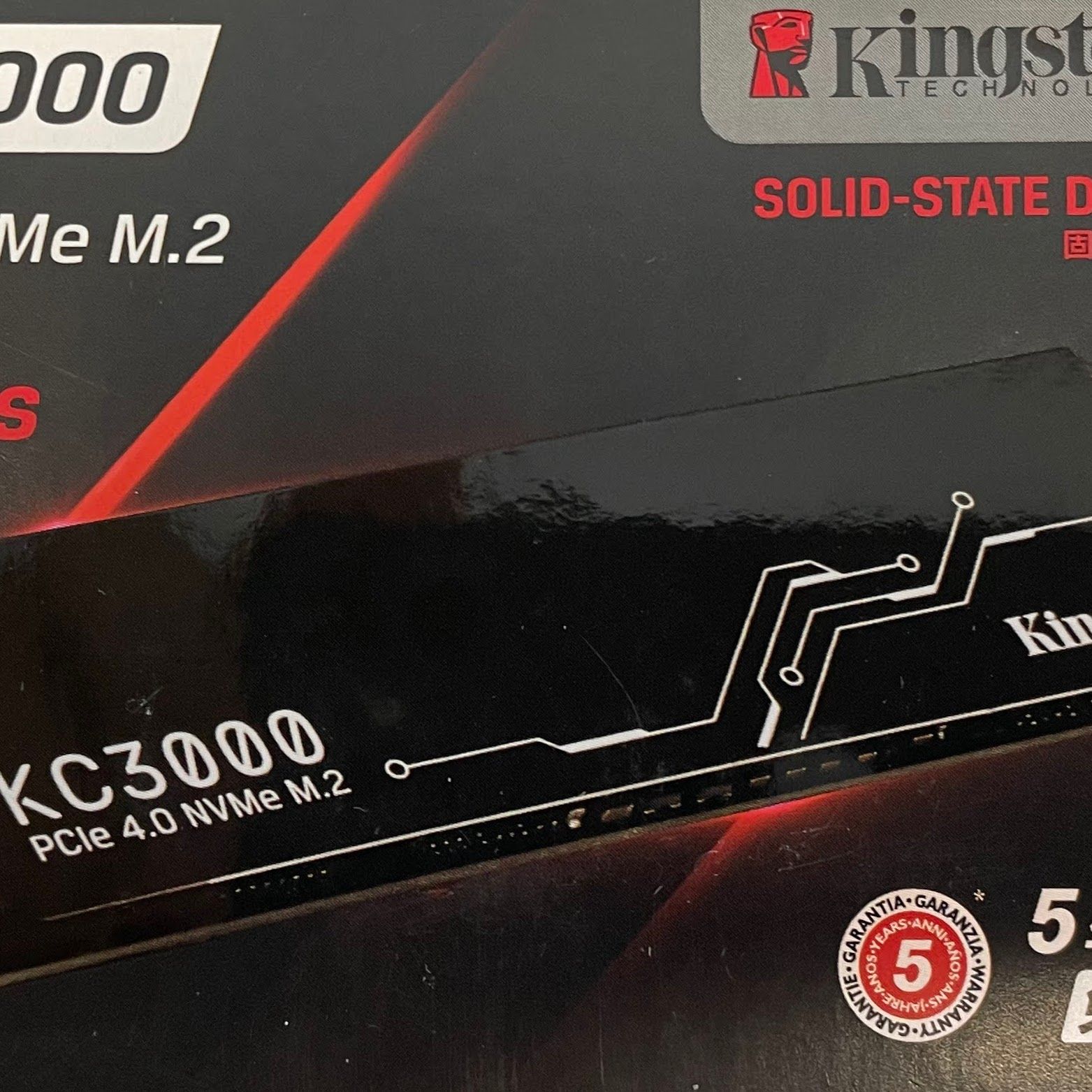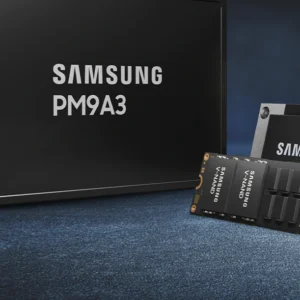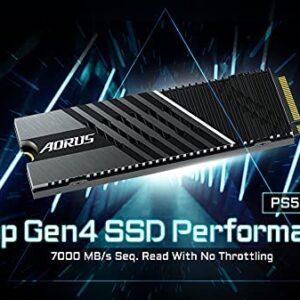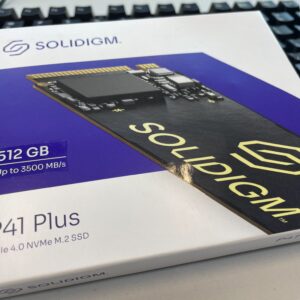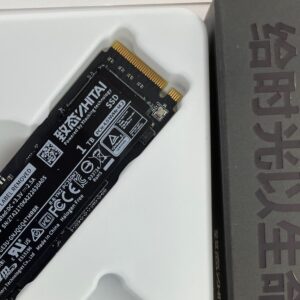Kingston KC3000 1T
Basic Information
In this report, we compare 3 popular SSDs in channel market: Kingston KC3000, WD SN850, Micron/Crucial P5Plus.
| Model Name | Firmware Version | |
|---|---|---|
| KC3000 | KINGSTON SKC3000S1024G | EIFK31.6 |
| SN850 | WDS100T1X0E-00AFY0 | 614900WD |
| P5Plus | CT1000P5PSSD8 | P7CR403 |
Latency
We still check their IO latency first.
Max Write Latency
| 10 IOPS (ms) | 4K 1QD (ms) | 512B 1QD 10p filled (ms) | 512B 1QD 50% filled (ms) | 4K mix RW 90% filled (ms) | |
|---|---|---|---|---|---|
| KC3000 | 7.398 | 8.485 | 6.473 | 6.351 | 15.375 |
| SN850 | 0.287 | 5.812 | 6.555 | 6.118 | 166.909 |
| P5Plus | 2.273 | 6.604 | 7.559 | 7.914 | 10.797 |
KC3000 controls max latency very well.
Speed
Sequential Write
| 10% filled (MB/s) | 90% filled (MB/s) | 50% trimmed (MB/s) | |
|---|---|---|---|
| KC3000 | 5434.081 | 1937.452 | 3420.778 |
| SN850 | 4833.883 | 1649.519 | 3225.354 |
| P5Plus | 3675.305 | 1313.732 | 2999.762 |
All drives have good and similar sequential write performance. The performance all degrade when drives are full filled, and recover after trim operations.
KC3000 performance is very stable.
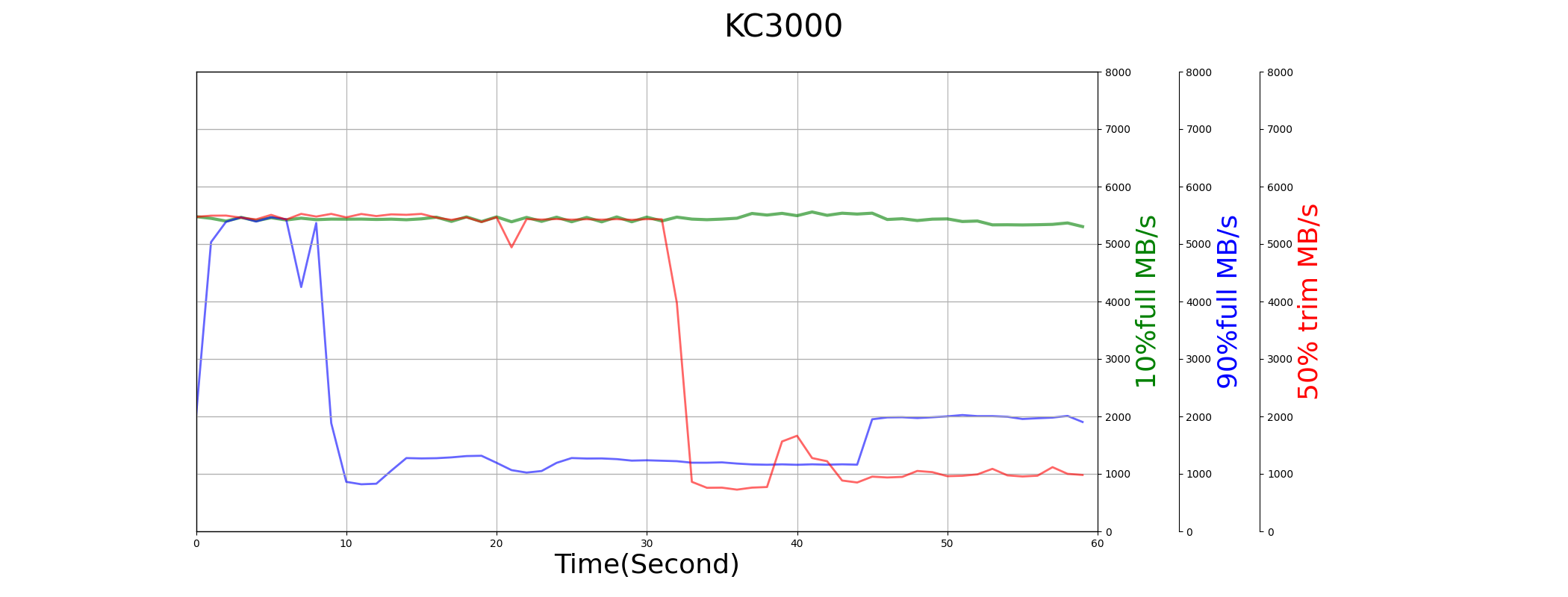
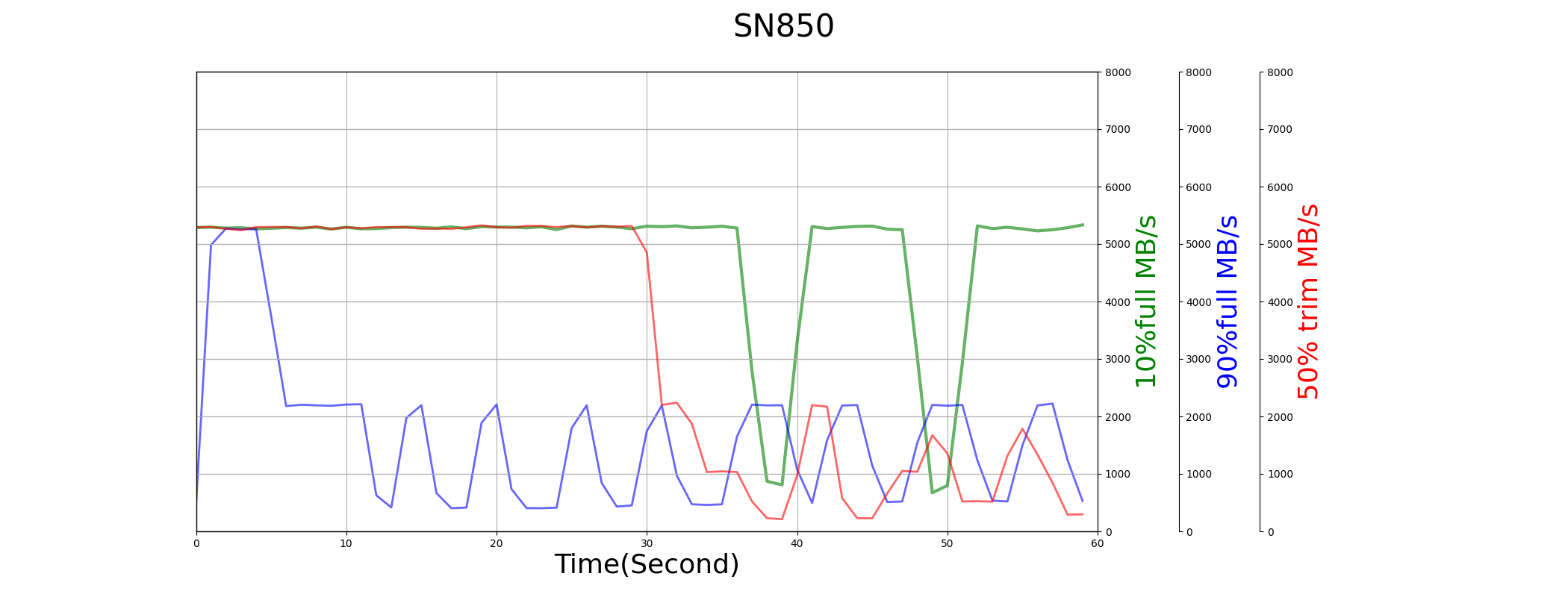
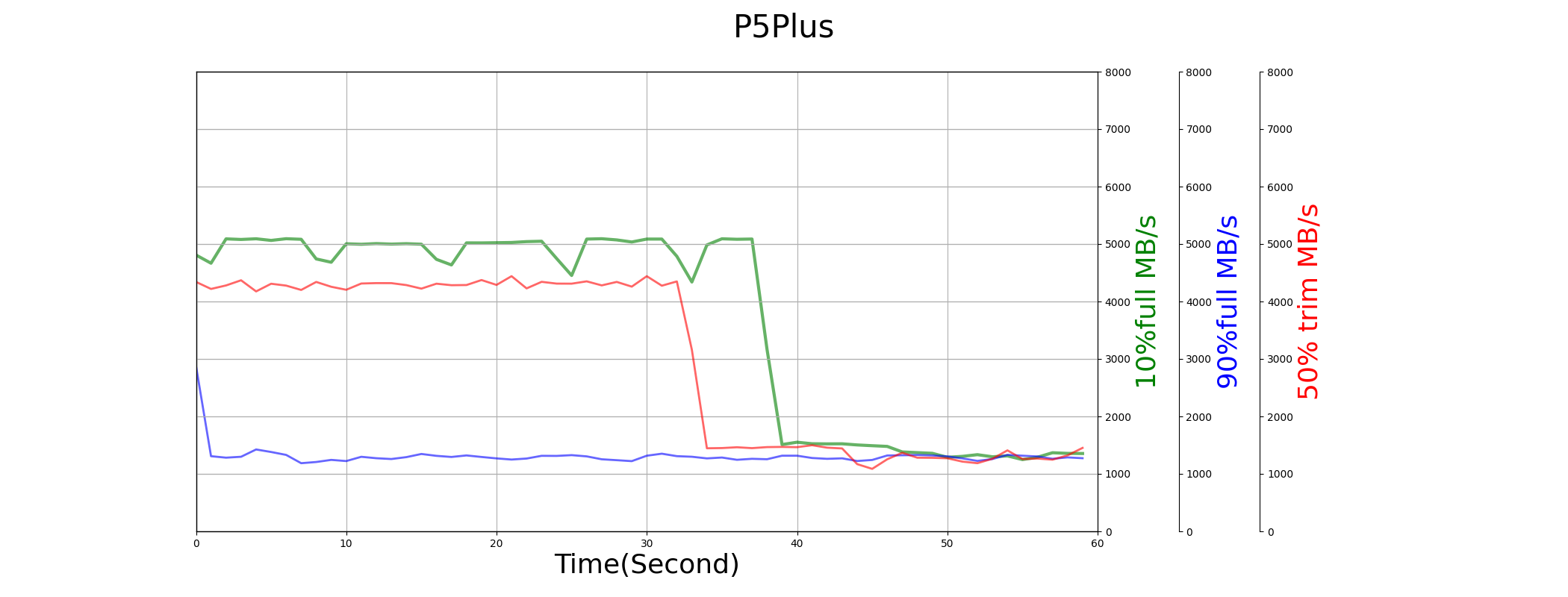
Random Write
| 10% filled (K IOPS) | 90% filled (K IOPS) | 50% trimmed (K IOPS) | |
|---|---|---|---|
| KC3000 | 264.605 | 218.042 | 236.009 |
| SN850 | 280.283 | 158.988 | 279.883 |
| P5Plus | 558.473 | 258.988 | 356.303 |
Both KC3000 and SN850 use full capacity as SLC cache, but the random performance of KC3000 is much better than SN850 when 90% capacity is filled.
Trim
Except for read and write, Trim is also a common command in nowadays’ OS. We test its performance by trim half LBA space.
| IOPS (K) | Max Latency (ms) | Average Latency (ms) | performance before trim (MB/s) | performance after trim (MB/s) | |
|---|---|---|---|---|---|
| KC3000 | 1.985 | 142.872 | 8.010 | 1694.944 | 3420.778 |
| SN850 | 4.184 | 13.649 | 3.804 | 2029.665 | 3225.354 |
| P5Plus | 2.592 | 44.545 | 6.103 | 1566.011 | 2999.762 |
KC3000’s latency performance is not good.
Power
If we use SSD in laptop, the power consumption is also a key consideration. We list TMT1/2 setting below.
| TMT1 (℃) | TMT2 (℃) | |
|---|---|---|
| KC3000 | 75 | 78 |
| SN850 | 80 | 82 |
| P5Plus | 76 | 79 |
Low Power State
| PS4 measured power (mW) | PS4 exit duration (us) | PS3 measured power (mW) | PS3 exit duration (us) | |
|---|---|---|---|---|
| KC3000 | 69.0 | 9727.1 | 85.7 | 9728.0 |
| SN850 | 1333.3 | 164.7 | 1332.1 | 164.1 |
| P5Plus | 60.8 | 25701.3 | 57.0 | 13695.6 |
KC3000 can enter low power state in our test, and it can exit from low power state much faster than P5Plus. SN850 may be busy on background tasks for a long time, so cannot enter low power state in our test.
Active Power Consumption
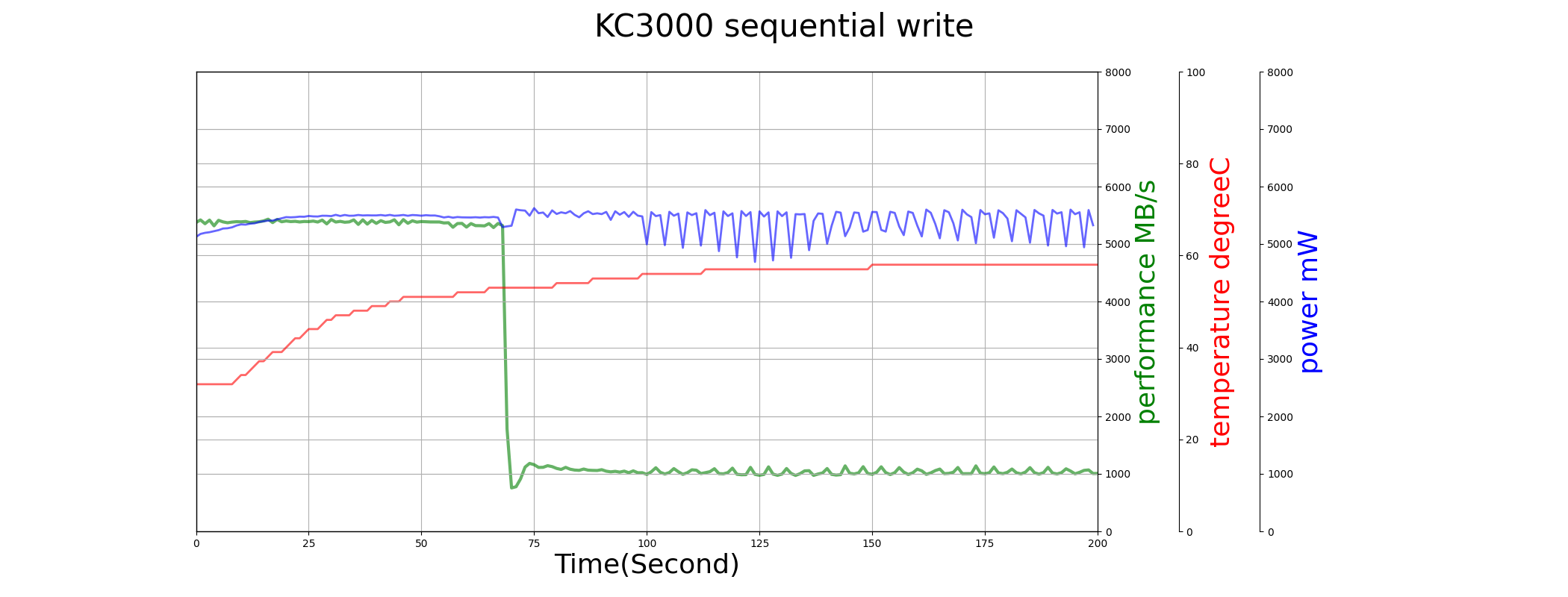
Same as SN850, KC3000 has a big SLC cache. But its temperature is much lower, so the performance is high and stable. When thermal throttling starts to work, the performance is also stable.
Reliability
SLC cache retirement
KC3000 use the whole capacity as SLC cache. When the drive is young and utilized space is low, it gives user the highest performance. Even when the drive is aged (e.g. > 2000 P/E used), we find that SLC cache is still there, and SLC performance lasts same duration as FOB. It is good for performance, but data reliability would be a problem.
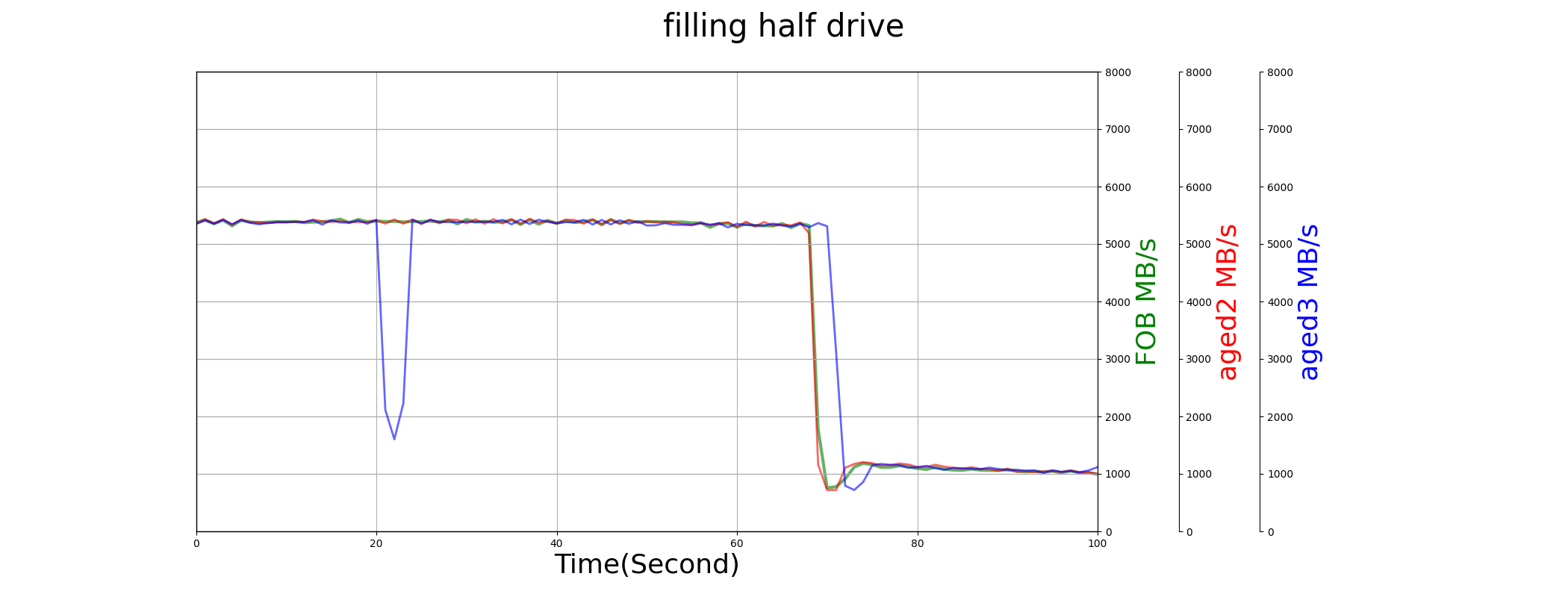
Data Retention
In our whole test process, we will write each DUT to its EOL (about 3000 P/E cycle for TLC SSD), then write the whole drive and keep them without power at the room temperature for 2 month. After that, we read the whole drive and verify its data integrity. Here is the test result.
| Data Units Written (1000LBA) | read speed 0 (MB/s) | read speed 2 (MB/s) | |
|---|---|---|---|
| KC3000 | 3849016648 | 4880 | 1456 |
| SN850 | 7506783940 | 4941 | 188 |
| P5Plus | 3829583393 | 5599 | 5662 |
‘read speed 0’ is captured right after the data was written, and ‘read speed 0’ is captured 2-month later. SN850 was written by much more data intentionally. We check the result of ‘read speed 2’.
We intentionally write SN850 much more than other drives, so SN850 suffers more NAND raw ECC data. But it still can recover all data without any UECC error. The low speed (188MB/s) may be caused by read retry and LDPC decoder.
KC3000 has similar Data Units Written as P5Plus. KC3000 has a big SLC cache, while P5Plus has a small SLC cache. So KC3000’s NAND suffers higher programming data than P5Plus. As the result, KC3000’s ‘read speed 2’ is much lower than P5Plus due to read retry. No UECC happen.
